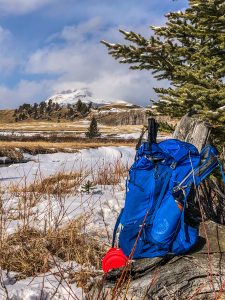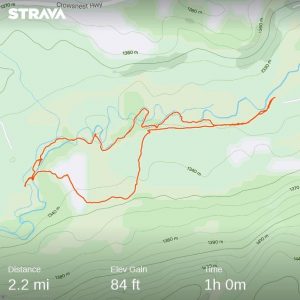For the task this week on Mode-Bending, we were to take another look at the What’s in your bag? task from the beginning of the course and to redesign or repurpose the task.
The intent for this task was not to record myself just stating what the items were in my bag, but to communicate the knowledge in a different way. As the New London Group (1996) stated, “Designing is making use of old materials,” and that the new redesigned material is something that has been, “reproduced and transformed.” With that in mind, I needed to think about how I could still share the information on What’s in my bag? in another way or rather change the semiotic mode. This does make me consider the importance of diversity when sharing information with others. Not all learners learn the same way, so we need to be mindful of how else and what alternate ways we can still communicate the same ideas. As I reflect on text and technologies, I have already noticed a shift of understanding from that first task and over the past month as to how I understand and interpret these literacies. I can see that text is not just focused on the written text but rather also involves the visual and even the auditory to convey meaning. These multiliteracies allow for a deeper and broader understanding of how text is just the medium to how we can communicate.
With this in mind, I have redesigned my task from that of the original visual to an auditory interpretation. I attempted to incorporate a multimodal understanding of the text to allow for the audio and voice to be woven in with that of the linguistic delivery and perhaps even behavioural where I tried to convey my emotions and feelings as I was on my walk. My intent was to take the listener on a journey with my bag to learn more about what the bag is, how it might be used and finally what is inside the bag. While taking the bag on this journey I will try to engage the listener in a podcast style experience of a “Day in the Life” of my bag. They may discover what some of the items in the bag are as they are more straightforward while other items may be implied and they may even consider what was in the bag that may not have been shared.
Now that you’ve listened to the podcast, hopefully you were able to capture what you heard was in my bag, or what I implied could be in my bag. Please comment below and let me know what you learned, not just about what was in my bag, but also what you may have learned about how I use my bag and what it says about me?
References:
The New London Group. (1996). A pedagogy of multiliteracies: Designing social futures. Harvard Educational Review 66(1), 60-92.


I really have just loved everyone’s version of this task. Both you and Ying I think were really successful at elucidating not only what’s in your bag, but how you interact with your bag and I think the interactions are more meaningful than the objects themselves. I also think this time around, compared to the first task, one can see how your bag is in service to your whole family and not just the objects you identify with.
Hi Deidra,
Thank you for your comments on this version of the task. I actually found this version to be a bit easier to develop over the first task; perhaps it allowed for another chance to re-shape the activity and bring it more to life. One thought that stuck with me was to think of how to re-shape the task to address more of a diversity of learners. As a Learning Support Teacher, one thought that I often carry is just how we can reach other learners besides in a universal way.